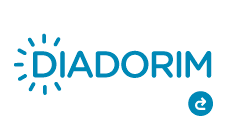DYSLIPIDEMIA CHANGES EXERCISE ENERGY EXPENDITURE IN MICE TRANSGENIC FOR HUMAN APOCIII
Resumen
Hypertriglyceridemia is a predisposing factor for several metabolic diseases in the world
today. Their cause is multifactorial, several factors are directly linked to the modification of
plasma lipid metabolism, among them are genetics and exercise. The genic overexpression of
apoCIII makes the animal hypertriglyceridemic and high levels of blood cholesterol, enabling
further studies to be done on its metabolic profile. This study investigates how apoCIII
overexpression and exercise modify the metabolism of genetically modified mice, especially
their energy expenditure. We used 15-month-old male C57Bl/6 mice, subdivided into 4
groups: 2 NTG groups (non-transgenic mice that were submitted to training and their
controls) and 2 CIII groups (transgenic Mice with basal triglyceridemia above 300mg/dL that
were submitted to training and their controls). The exercised groups underwent for 8 weeks a
moderate intensity training for 40 minutes 3 times a week. All animals were submitted to a
stress test to evaluate performance and energy expenditure. The trained animals had higher
energy expenditure during all stages of the test (p<0.01) and the area under curve of the EE
showed that the trained animals had higher caloric consumption (p<0.001), while the animal
CIII sed had a much higher energy expenditure than its control NTG sed (p<0.001). We
conclude that dyslipidemia makes the CIII animal less fit for exercise, and trained animals
have lower energy expenditure independent of dyslipidemia and produced more work.
Descargas
Citas
induced obesity due to adipose tissue higher exogenous lipid uptake and retention and lower lipolysis
rates. Nutr Metab (Lond). 2015 Dec 23;12:61. doi: 10.1186/s12986-015-0058-6.
2. Caron S, Verrijken A, Mertens I, Samanez CH, Mautino G, Haas JT, Duran-Sandoval D, Prawitt J,
Francque S, Vallez E, Muhr-Tailleux A, Berard I, Kuipers F, Kuivenhoven JA, Biddinger SB, Taskinen
MR, Van Gaal L, Staels B. Transcriptional activation of apolipoprotein CIII expression by glucose may
contribute to diabetic dyslipidemia. Arterioscler Thromb Vasc Biol. 2011 Mar;31(3):513-9. doi:
10.1161/ATVBAHA.110.220723.
3. Lee HY, Birkenfeld AL, Jornayvaz FR, Jurczak MJ, Kanda S, Popov V, Frederick DW, Zhang D,
Guigni B, Bharadwaj KG, Choi CS, Goldberg IJ, Park JH, Petersen KF, Samuel VT, Shulman GI.
Apolipoprotein CIII overexpressing mice are predisposed to diet-induced hepatic steatosis and hepatic
insulin resistance. Hepatology. 2011 Nov;54(5):1650-60. doi: 10.1002/hep.24571
4. Faludi AA, Izar MCO, Saraiva JFK, Chacra APM, Bianco HT, Afiune A Neto, Bertolami A, Pereira
AC, Lottenberg AM, Sposito AC, Chagas ACP, Casella A Filho, Simão AF, Alencar AC Filho,
Caramelli B, Magalhães CC, Negrão CE, Ferreira CEDS, Scherr C, Feio CMA, Kovacs C, Araújo DB,
Magnoni D, Calderaro D, Gualandro DM, Mello EP Junior, Alexandre ERG, Sato EI, Moriguchi EH,
Rached FH, Santos FCD, Cesena FHY, Fonseca FAH, Fonseca HARD, Xavier HT, Mota ICP, Giuliano
ICB, Issa JS, Diament J, Pesquero JB, Santos JED, Faria JR Neto, Melo JX Filho, Kato JT, Torres KP,
Bertolami MC, Assad MHV, Miname MH, Scartezini M, Forti NA, Coelho OR, Maranhão RC, Santos
RDD Filho, Alves RJ, Cassani RL, Betti RTB, Carvalho T, Martinez TLDR, Giraldez VZR, Salgado W
Filho. Atualização da Diretriz Brasileira de Dislipidemias e Prevenção da Aterosclerose – 2017. Arq
Bras Cardiol. 2017 Jul;109(2 Supl 1):1-76. Portuguese. doi: 10.5935/abc.20170121.
5. Su X, Peng D. The exchangeable apolipoproteins in lipid metabolism and obesity. Clin Chim Acta.
2020 Apr;503:128-135. doi: 10.1016/j.cca.2020.01.015.
6. Jong MC, Hofker MH, Havekes LM. Role of ApoCs in lipoprotein metabolism: functional differences
between ApoC1, ApoC2, and ApoC3. Arterioscler Thromb Vasc Biol. 1999 Mar;19(3):472-84. doi:
10.1161/01.atv.19.3.472.
DECLARAÇÃO DE ORIGINALIDADE E DIREITOS AUTORAIS
Declaro que o presente artigo é original, não tendo sido submetido à publicação em qualquer outro periódico nacional ou internacional, quer seja em parte ou em sua totalidade.
Os direitos autorais pertencem exclusivamente aos autores. Os direitos de licenciamento utilizados pelo periódico é a licença Creative Commons Attribution 4.0 (CC BY ): são permitidos o acompartilhamento (cópia e distribuição do material em qualqer meio ou formato) e adaptação (remix, transformação e criação de material a partir do conteúdo assim licenciado para quaisquer fins, inclusive comerciais.

Recomenda-se a leitura desse link para maiores informações sobre o tema: fornecimento de créditos e referências de forma correta, entre outros detalhes cruciais para uso adequado do material licenciado.
















